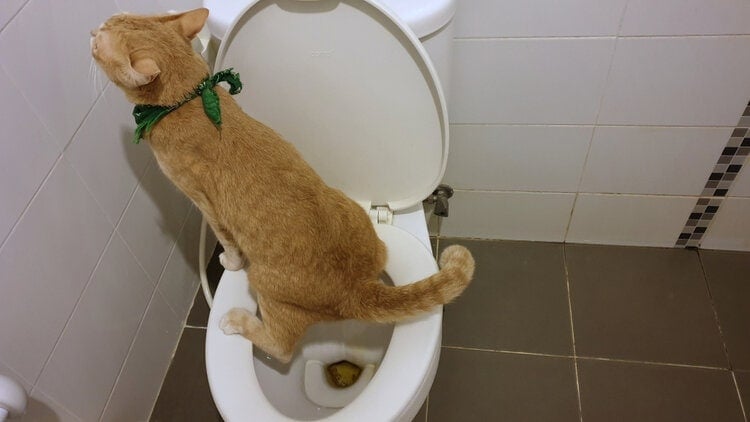Why You Should Avoid Flush Cat Poop Down Your Toilet - Crucial Facts
Why You Should Avoid Flush Cat Poop Down Your Toilet - Crucial Facts
Blog Article
Nearly everybody will have their own individual thinking about How to Dispose of Cat Poop and Litter Without Plastic Bags.

Intro
As pet cat proprietors, it's vital to bear in mind just how we dispose of our feline buddies' waste. While it may seem hassle-free to purge feline poop down the bathroom, this practice can have harmful consequences for both the setting and human wellness.
Ecological Impact
Flushing pet cat poop presents damaging pathogens and bloodsuckers right into the water, posturing a considerable risk to aquatic communities. These contaminants can adversely impact aquatic life and compromise water high quality.
Wellness Risks
Along with environmental problems, flushing pet cat waste can also present health dangers to human beings. Cat feces might have Toxoplasma gondii, a parasite that can trigger toxoplasmosis-- a possibly severe health problem, specifically for pregnant women and people with damaged immune systems.
Alternatives to Flushing
Luckily, there are more secure and extra responsible ways to throw away pet cat poop. Take into consideration the adhering to alternatives:
1. Scoop and Dispose in Trash
The most typical technique of throwing away pet cat poop is to scoop it right into a naturally degradable bag and toss it in the trash. Make certain to utilize a devoted litter inside story and take care of the waste without delay.
2. Usage Biodegradable Litter
Choose biodegradable cat clutter made from materials such as corn or wheat. These litters are eco-friendly and can be safely dealt with in the garbage.
3. Bury in the Yard
If you have a yard, take into consideration burying feline waste in a designated location away from veggie gardens and water resources. Be sure to dig deep adequate to prevent contamination of groundwater.
4. Install a Pet Waste Disposal System
Invest in a pet dog waste disposal system especially designed for feline waste. These systems make use of enzymes to break down the waste, decreasing smell and ecological impact.
Final thought
Liable pet ownership prolongs past providing food and shelter-- it likewise includes correct waste monitoring. By refraining from flushing cat poop down the toilet and selecting alternate disposal approaches, we can decrease our ecological impact and shield human wellness.
Why Can’t I Flush Cat Poop?
It Spreads a Parasite
Cats are frequently infected with a parasite called toxoplasma gondii. The parasite causes an infection called toxoplasmosis. It is usually harmless to cats. The parasite only uses cat poop as a host for its eggs. Otherwise, the cat’s immune system usually keeps the infection at low enough levels to maintain its own health. But it does not stop the develop of eggs. These eggs are tiny and surprisingly tough. They may survive for a year before they begin to grow. But that’s the problem.
Our wastewater system is not designed to deal with toxoplasmosis eggs. Instead, most eggs will flush from your toilet into sewers and wastewater management plants. After the sewage is treated for many other harmful things in it, it is typically released into local rivers, lakes, or oceans. Here, the toxoplasmosis eggs can find new hosts, including starfish, crabs, otters, and many other wildlife. For many, this is a significant risk to their health. Toxoplasmosis can also end up infecting water sources that are important for agriculture, which means our deer, pigs, and sheep can get infected too.
Is There Risk to Humans?
There can be a risk to human life from flushing cat poop down the toilet. If you do so, the parasites from your cat’s poop can end up in shellfish, game animals, or livestock. If this meat is then served raw or undercooked, the people who eat it can get sick.
In fact, according to the CDC, 40 million people in the United States are infected with toxoplasma gondii. They get it from exposure to infected seafood, or from some kind of cat poop contamination, like drinking from a stream that is contaminated or touching anything that has come into contact with cat poop. That includes just cleaning a cat litter box.
Most people who get infected with these parasites will not develop any symptoms. However, for pregnant women or for those with compromised immune systems, the parasite can cause severe health problems.
How to Handle Cat Poop
The best way to handle cat poop is actually to clean the box more often. The eggs that the parasite sheds will not become active until one to five days after the cat poops. That means that if you clean daily, you’re much less likely to come into direct contact with infectious eggs.
That said, always dispose of cat poop in the garbage and not down the toilet. Wash your hands before and after you clean the litter box, and bring the bag of poop right outside to your garbage bins.
https://trenchlesssolutionsusa.com/why-cant-i-flush-cat-poop/

As an enthusiastic reader on Can You Flush Cat Poo or Litter Down the Toilet?, I think sharing that blog post was necessary. Those who appreciated our blog posting kindly do not forget to pass it around. I am grateful for your time. Please pay a visit to our blog back soon.
Book Instantly Report this page